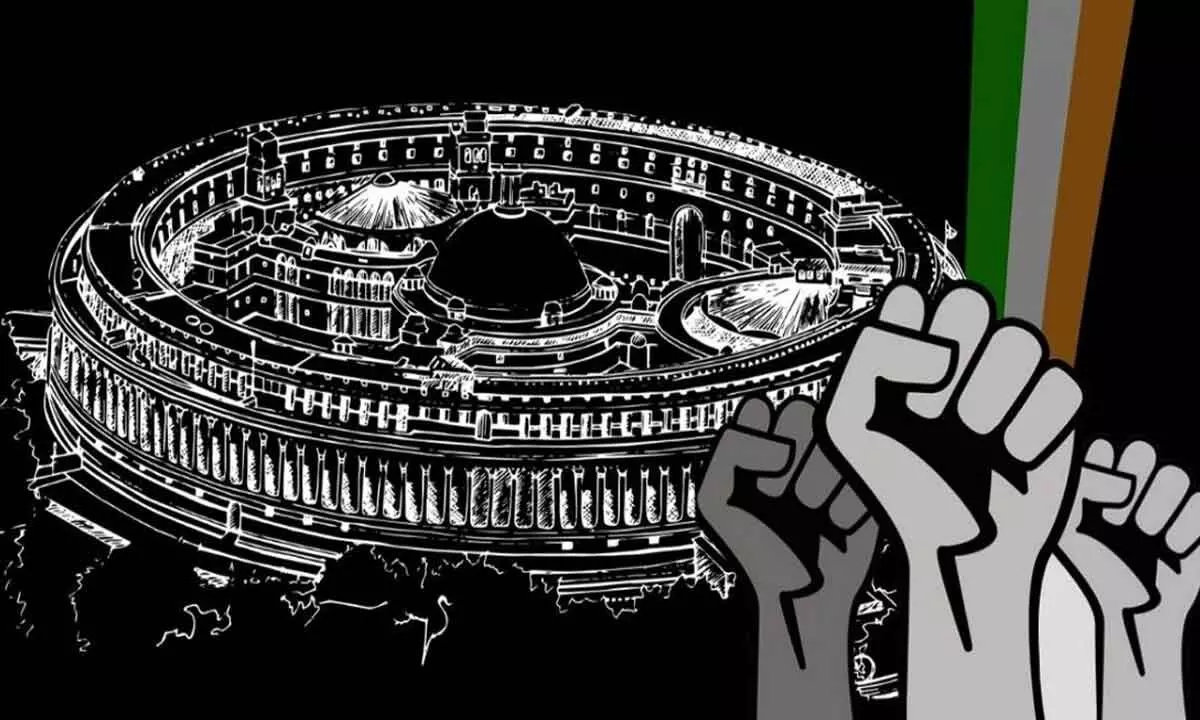Live
- Traffic jam at ghat road as devotees throng Srisailam temple
- NDA govt neglecting edu sector, flays Jagan
- No country in world matches India's zeal for knowledge: Yogi
- Special trains for Ayyappa devotees
- Didn’t expect win margin to be so huge: BJP’s Ramveer
- Am I Pregnant? Symptoms to look out for
- iOS 19 and LLM Siri Delayed Until April 2026: What to Expect
- NGO brings hearing impaired youth into professional path
- Mass Kolatam at SVU enters Wonder Book of Records
- Koil Alwar Thirumanjanam on Nov 26
Just In
In India, politics is art of the possible forever


Around 50 years ago, Bihar was at the centrestage of Indian politics with ‘Sampoorna Kranti’ movement announced by the stalwart politician Jayaprakash...
Around 50 years ago, Bihar was at the centrestage of Indian politics with ‘Sampoorna Kranti’ movement announced by the stalwart politician Jayaprakash Narayan soon after Indira Gandhi was found guilty of violating electoral laws. Combating the rising anger among the public and the building crescendo of opposition against her rule, the Iron Lady imposed the Emergency in June 1975 and Narayan was imprisoned along with many anti-Congress party leaders like L K Advani and A B Vajpayee. What happened afterwards is well-known having gone down as a turbulent phase in Indian politics of the 20th century.
Nitish Kumar, then a Young Turk, accompanied by an equally popular and emerging politician Laloo Prasad Yadav debuted in the world of realpolitik in that phase. Little did one know that even as India enters the silver jubilee year of the new millennium, Nitish would still remain relevant and create an aura of indispensability around him in his state, where he has recently taken over as the Chief Minister for the record ninth time.
Just a few days after the massively reported incident of the consecration ceremony of Lord Rama at Ayodhya, an equally spotlight-hogging event took place at Patna, which again showcases the flexibility and permissive nature of today’s politics.
In many ways, it should be comforting for the deal makers and negotiators in the saffron party that in upcountry India, there are pliant and accommodating politicians heading governments which needs their support and who do not hesitate to raise a hand seeking it at opportune times. Such frenemies are the leaders with whom BJP has managed to retain its vice-like grip on the political affairs of BIMARU states over a few decades now.
With political morality touching new lows in India, the five states of south India has its own version, where personal rivalries and petty one-upmanship dominate the day-to-day political routines. The NDA seems to be in wilderness at the time of writing in this part of the country (as far as its preparedness and winnability is concerned) in the ensuing Lok Sabha polls.
Ideally, BJP would desire the Nitish model of governance to be made available in south India, too, for its continuing rule from Delhi. All their tactics have floundered here, with adjustment politics keeping them very far away from the victory slots all over. At best, they have had a Jagan Mohan Reddy kind of a supporter who has his own reasons to be seen in their company. Or, till the DMK government took over in Chennai, the EPS model of AIADMK, who was under pressure in a way to keep on the right side of New Delhi. In recent times, even the MGR-founded party has moved away from the Hindutva proponents.
The Bihar success must have made a few strategists of the saffron party feel relieved that they can balance their score in the numbers game that Lok Sabha polls is all about. Yet, 2024 elections would keep hurting the Modi-led team when they appeal for votes in south India, which seems to be happy revelling in its identity of ‘BJP-mukt Dakshin Bharat’, remaining the impregnable fortress of its own model of secularism and peaceful co-existence, by and large.

© 2024 Hyderabad Media House Limited/The Hans India. All rights reserved. Powered by hocalwire.com






